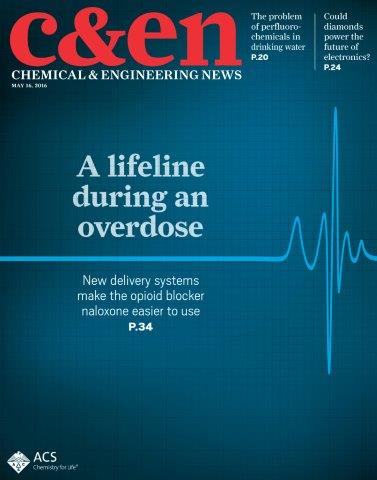FOR IMMEDIATE RELEASE
ACS News Service Weekly PressPac: May 19, 2016
Antidote to opioid drug overdoses could become more accessible
"Naloxone for all"
Chemical & Engineering News
Over the past 15 years, deaths caused by heroin and prescription opioid overdoses have quadrupled despite the existence of a highly effective antidote. The cover story in Chemical & Engineering News (C&EN), the weekly newsmagazine of the American Chemical Society, explores what it might take to turn the tide.
Bethany Halford, a senior editor at C&EN, reports that naloxone, the opioid overdose antidote, first became available in an injectable form to hospitals and emergency medical personnel in the 1970s. The drug works by competing for the same receptors as heroin and opioids without turning them on and producing a high. Naloxone works quickly but must be administered within minutes to hours of an overdose to prevent brain damage and death. Getting the drug to a patient, however, can be a problem. Illicit-drug users who witness an overdose might hesitate to call 911 out of fear of being arrested. Also, injecting someone via a vein or muscle can be daunting to untrained bystanders even if they already have the drug in hand.
To address these issues, scientists developed naloxone as an intranasal spray and an easy-to-use autoinjector. The Food and Drug Administration approved the products in 2015 and 2014, respectively. Health advocates say that heroin users and patients taking prescription opioids for pain should have these devices immediately accessible rather than relying on paramedics. Price spikes could hinder access, but legal barriers are coming down.


